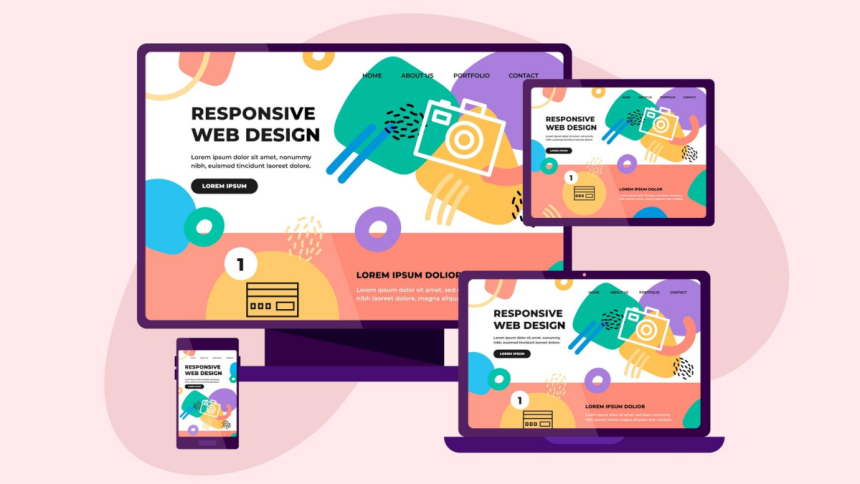As the internet has evolved, many web browsers and their versions are emerging regularly. Having so many options, the users find it challenging to choose which web browser option is better for them. So, making your website compatible and fully functioning with all the majorly used web browsers is very important. So that the user will get a seamless experience on a particular website regardless of any web browser they choose to visit that website. But how can you ensure your website will be compatible with all those web browsers?
To make this possible, the QA and website developers use cross-browser testing. However, since each browser interprets code differently, it can cause layout issues, feature malfunctions, and poor user experience. This is where cloud-based cross-browser testing becomes crucial.
Suppose you are searching to make your web application or website compatible with many web browsers, OS, and versions. In that case, making effective cross-browser testing and prioritizing this testing process becomes important.
In this article, first, you will see what cross-browser testing is and who performs cross-browser testing. Then, you will see why we need cross-browser testing and why this process is so important.
Introduction to Cross-Browser Testing
Cross-browser testing refers to the web app or website testing process of verifying that web applications work as expected across many combinations of web browsers and their versions, operating systems, and devices. It checks whether your web app or website can be accessed through different browsers and devices, keeping all its features and functionalities well. There shouldn’t be any malfunctioning of the website components, and all the components are working well without errors.
Some old browsers and their versions do not support JavaScript features and CSS styling, which can create an issue for users of these browsers. The user will not be able to enjoy some vital features and components of a website. Therefore, it is a major step to make your website cross-browser compatible and ensure optimal website functionality across all available platforms.
As we know, web browsers behave differently and take every browser’s HTML, CSS, and JavaScript components differently. So, it becomes a very complex task for the QA team to check against various browsers, OS, and combinations. The QA and website development team use cloud-based automated cross-browser testing tools and frameworks to reduce such difficulties.
Many cloud-based cross-browser testing platforms offer a vast array of real devices, emulators, and browsers that can be accessed remotely. The QA team website developer team can perform automated tests on these platforms. It allows them to cover a wide range of browser and device combinations without requiring extensive physical hardware; hence, the testing scope increases. Using cloud-based cross-browser testing tools like LambdaTest also reduces testing time, saves extra costs, saves human effort, and has many more advantages.
LambdaTest is a powerful cloud testing platform that aims to streamline and enhance the automation testing process for developers and testers. One of its key strengths lies in its ability to automate complex and uncertain scenarios, providing a reliable solution for addressing various testing requirements.
What sets LambdaTest apart in automation testing is its AI-powered test execution and orchestration capabilities. Using LambdaTest, users can access a vast grid of over 3000 real browsers and operating system combinations. This diverse testing environment ensures comprehensive coverage, guaranteeing thorough testing across various configurations.
LambdaTest goes beyond traditional automation capabilities, making it an invaluable tool for handling intricate testing scenarios. Its user-friendly interface and advanced features empower teams to seamlessly automate tests, allowing for efficient and effective testing across different browsers and operating systems. All in all, LambdaTest serves as a versatile and powerful ally for those looking to optimize their automation testing processes.
Who Performs Cross-Browser Testing?
Any professional can perform cross-browser with a basic understanding of web design and development. To perform cross-browser testing, you do not need to be a coder. There are many automated tools that do not require any coding practice and still help to perform cross-browser testing. Marketers and web designers can use automated tools to test landing pages and fresh designs for cross-browser and ensure cross-browser compatibility in the age of multiple devices.
The QA team uses different automated and cloud-based tools to test scenarios on a combination of web browsers and OS versions to meet the website compatibility requirements. The decision of what combination of platforms, browsers (their versions), OS, and devices are to be included in cross-browser testing is made by stakeholders (clients, business analysts, and marketing specialists). Sometimes, the developers and testers may also have a say in this decision. Two teams generally use cross-browser testing. These are as follows:
● Development Team
The professionals involved in website designing and website development teams use cross-browser testing. They use this testing to check the design and user interface (UI) features such as images, font size, font style, alignment, etc.
● QA Team
Cross-browser testing is used by the QA (Quality Assurance) team to verify that a website or web application works with its full features and functionality with different web browsers and their versions. They run the same test cases across all platforms to ensure that the website’s features and functionality are operating without errors and bugs. If discrepancies are found, the QA team raises defects, and the development team fixes them.
Importance of Cross-Browser Testing in the Age of Multiple Devices
Now, let us see why cross-browser testing is so important when you have many devices with different configurations.
● User Experience
The reason to make your website cross-browser compatible is to provide your users with a smooth user experience. When a user visits a website, they expect it to fully function with every feature accessible to them. That’s what we call user experience. Different browsers can display website elements differently, leading to slow loading times, incorrect displays, and website crashes. This issue results in a poor user experience, which can badly affect your business. Due to these reasons, cross-browser testing becomes very important for a web app or website before making it live. Testers generally leverage online mobile device labs.
● SEO Optimization
A website’s performance is the major factor contributing to the ranking of search engines such as Google and Bing. If a website lags, loads slowly, or shows reduced features in a particular web browser, it will degrade the search engine ranking. And ultimately, it will affect SEO optimization. The users will not be able to find the websites easily, and it will be hard to target potential users for a website owner. So, cross-browser testing helps identify and fix these kinds of website issues and improves website performance and search engine rankings.
● Proper Functioning on Mobile Devices
As technology grows, many users do not even go to the desktop or computer to visit a website. They explore the website using the web browser on their mobile or tablets. When talking about the mobile web browser, it means that the website you are using on the mobile should be compatible with all the majorly used web browsers for mobile devices and mobile operating systems. The website’s contents must be properly functioning over the mobile web browsers, their versions, and combinations.
The website’s content should be adaptable and adjusted according to screen sizes, resolutions, etc. For instance, the images that appear perfectly on all desktop browsers may not be aligned appropriately on a mobile browser. Hence, mobile browser testing is essential, making the website compatible with different screen sizes and mobile operating systems.
● To Display on Majorly Used Desktop Browser
An unpleasant user experience works against your goal of retaining a visitor on your website, which is the last thing a website developer or owner wants. So, it is always advised to make your website compatible to function smoothly and provide a hassle-free website experience across every major desktop web browser. As we know, Google Chrome is the most popular and widely used desktop web browser, and 64% of users use it. This data is shared by a renowned organization, namely “NetMarketShare”.
It reveals that Google Chrome browsers occupy 64% of the market share with other web browsers such as Firefox, Internet Explorer, Opera Browser, Safari, etc. And there are different versions of these web browsers. Because all the users do not update all the time, making your website cross-browser compatible is a very important task. Hence, cross-browser testing becomes important in this scenario.
● Business Impact
The poor performance of a website can lead to a huge loss for the business of that website. So many websites determine the customer engagement of their company by providing services through their websites. If the website does not work properly on various web browsers, it will impact the business as the inconsistent user experience will deter customers from other competitive business websites. So, cross-browser testing also becomes very important in such cases.
Conclusion
Cross-browser testing is a type of website testing approach used by the QA team to check whether your web app or website can be accessed through different browsers and devices, keeping all its features and functionalities in good working condition. Since all web browsers accept JavaScript and CSS features differently, it is possible that some features and components of a website will not appear the same way they appear in other web browsers. The cross-browser testing approach can handle this rendering of the website. So, it becomes important to perform cross-browser testing so that the web app or website provides a hassle-free user experience without malfunctioning the website component.
You do not need to be a professional coder to perform cross-browser testing. Cross-browser testing is performed by the website development and QA (Quality Assurance) teams. Cross-browser testing is important to provide a good user experience to the website visitors. Cross-browser testing helps to identify and fix these kinds of website issues and improves the website performance and search engine rankings. Also, it is important to perform cross-browser testing to display on majorly used desktop browsers and for proper functioning on mobile devices.
Lynn Martelli is an editor at Readability. She received her MFA in Creative Writing from Antioch University and has worked as an editor for over 10 years. Lynn has edited a wide variety of books, including fiction, non-fiction, memoirs, and more. In her free time, Lynn enjoys reading, writing, and spending time with her family and friends.















